Introduction
Amazon Web Services (AWS) and Microsoft Azure are two leading cloud computing platforms that offer robust solutions for businesses. With their extensive range of services and global infrastructure, they provide scalable, highly available, and secure systems. AWS stands out for its ability to create powerful infrastructures and its global reach, while Azure excels in integrating with Microsoft's software ecosystem.
Both platforms have evolved their security measures to protect against cyber threats, offering sophisticated security protocols. Real-world applications, such as GoDaddy's optimization of operations and the growing adoption of cloud services by small and medium enterprises, demonstrate the effectiveness and demand for cloud solutions. While AWS has long held a significant market share, Azure is gaining momentum due to factors like digital transformation and the increasing significance of advanced technologies.
When comparing the two platforms, it's essential to consider their service categories, infrastructure capabilities, pricing models, integration with other services, user experience, and support options. Overall, AWS and Azure embody the transformative power of cloud computing, empowering businesses to stay agile and responsive in a rapidly evolving digital world.
Overview of AWS and Azure
Amazon Web Services (AWS) and Microsoft Azure are at the forefront of cloud computing, providing robust platforms that cater to the diverse needs of businesses. AWS, with its extensive array of services and global reach, is renowned for enabling scalable, highly available, and fault-tolerant systems. These systems ensure that even if one data center encounters issues, the services remain uninterrupted, with data swiftly recovered from another location. Azure, on the other hand, offers similar high availability and disaster recovery options, presenting a competitive edge in integrating with Microsoft's software ecosystem.
What sets these platforms apart is their approach to infrastructure and operations. AWS facilitates the creation of powerful infrastructures that traditionally required time-consuming optimization of databases and updating of hardware. Now, businesses can easily scale and employ robust servers, firewalls, and encryption tools through AWS's cloud hosting services. Azure's strength lies in its seamless integration with Microsoft products, making it an ideal choice for organizations heavily invested in Microsoft software and services.
In the context of security, both AWS and Azure have evolved from basic security measures to sophisticated, multi-layered strategies. As the history of cloud security reveals, initial cloud services underestimated the importance of security. However, the rise in cyber threats has led to a significant transformation in how cloud providers protect data, with both AWS and Azure now offering intricate security protocols to safeguard against a wide range of cyber risks.
Real-world applications demonstrate the effectiveness of these cloud platforms. GoDaddy, a global leader in domain registration and web hosting with over 20 million customers, leverages data-driven insights to optimize their operations. The company's journey to enhance batch processing jobs through a structured methodology, referred to as the 'seven layers of improvement opportunities,' exemplifies the practical benefits of cloud adoption. Their commitment to efficiency underscores the importance of robust cloud services in a competitive online business landscape.
As the cloud market continues to grow, driven by the fourth industrial revolution and the adoption of advanced technologies like IoT and AI, the demand for cloud services is surging. Infrastructure as a Service (IaaS), Software as a Service (SaaS), and Platform as a Service (PaaS) are becoming increasingly popular, particularly among small and medium enterprises seeking to modernize and adapt rapidly to market changes. Governments worldwide are also supporting this shift with initiatives promoting technological innovation across industries, from retail to finance.
In conclusion, AWS and Azure embody the transformative power of cloud computing, offering high-performance, secure, and scalable solutions that empower businesses to stay agile and responsive in a rapidly evolving digital world.
Market Share and Adoption
Amazon Web Services (AWS) has long held a significant lead in the cloud computing market, a testament to its comprehensive network of global data centers, known as Availability Zones. This vast infrastructure enables AWS to offer reliable, scalable services to a multitude of customers, reinforcing its dominance, particularly in the Infrastructure as a Service (IaaS) and Platform as a Service (PaaS) sectors. According to industry reports, AWS commanded a substantial portion of the global cloud infrastructure market as of 2021, highlighting its strong market presence.
Nevertheless, Microsoft Azure is quickly making strides in this competitive landscape. Factors fueling the growth of cloud services, such as rapid digital transformation across industries, increased internet and smart device usage, and the rising significance of big data, IoT, 5G, Machine Learning, and Artificial Intelligence, have contributed to Azure's momentum. Azure's advancements are not only a response to the growing demand but also an indicator of the platform's commitment to meeting the evolving needs of large organizations.
The transformative impact of cloud technology is evident as businesses continue to adopt cloud architectures for more efficient and agile operations, adjusting swiftly to changing market conditions. The drive towards cloud computing is further propelled by the benefits of leveraging on-cloud services to utilize advanced technologies, as noted by the World Economic Forum.
In the context of generative AI, the shift towards cloud-based solutions is particularly notable. Organizations are increasingly cautious about investing directly in hardware that may quickly become obsolete. Cloud platforms, offering access to the latest technologies, address this concern, providing an operational model that can be deployed on-premises, at the edge, or anywhere else required. While some applications and infrastructure remain off-cloud, the trend towards cloud-based solutions is unmistakable, reflecting a broader industry shift from viewing the cloud as merely a location to embracing it as a comprehensive operating model.
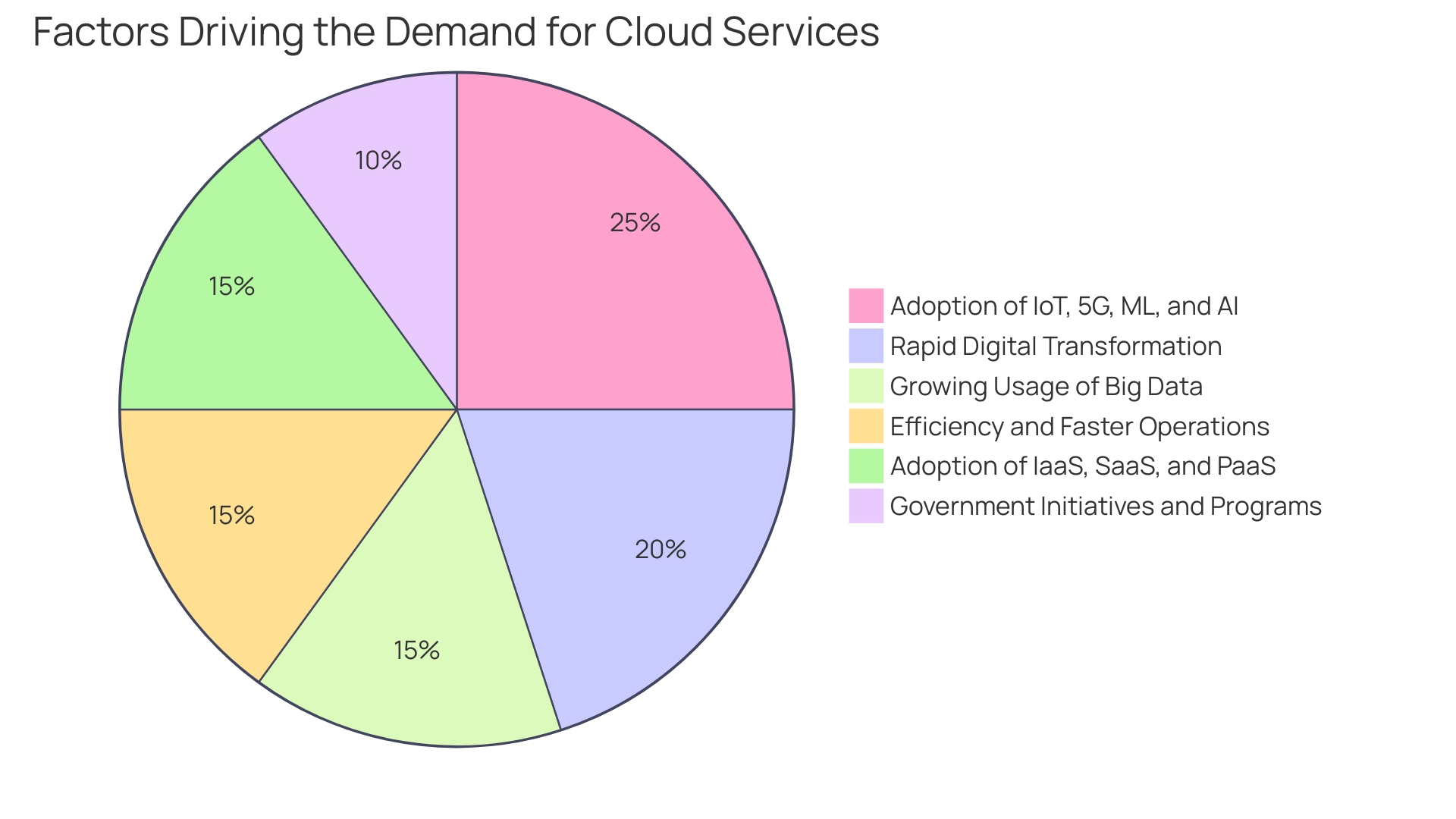
Service Categories Comparison
When evaluating cloud service providers, AWS and Azure emerge as prominent competitors, each with a comprehensive suite of offerings encompassing compute, storage, networking, databases, and analytics. Their services are designed to meet the security, performance, and scalability needs of businesses. While AWS has established a reputation for a broad range of services and a complex, pay-as-you-go pricing structure, Azure distinguishes itself with a robust identity and access management service through Azure Active Directory (AD). With features like multi-factor authentication and identity governance, Azure AD serves as a cornerstone for secure cloud interactions.
In terms of security, both AWS and Azure have evolved from basic protective measures to advanced, multi-layered security strategies to counteract the increasing sophistication of cyber threats. This shift reflects the heightened emphasis on cloud security due to the growing dependence of businesses on cloud platforms. The reliance on cloud services is so pronounced that any outages, especially from a provider like AWS, can cause significant disruptions, as seen in recent events reported by industry analysts.
When considering costs, it's crucial to analyze more than just the pricing differences between AWS and Azure. Factors like service quality, reliability, and vendor support play a significant role in the decision-making process. Although both providers offer competitive pricing, the actual value for a business will depend on how well the services integrate with existing systems and the specific requirements of each organization.
For a more granular comparison, Azure Active Directory's identity governance capabilities can be weighed against AWS's Identity and Access Management (IAM) in terms of feature set and cost-effectiveness. The decision between AWS and Azure should be informed by a careful evaluation of the latest pricing details and service offerings, which are subject to change over time. Industry experts emphasize the importance of reviewing current provider websites for the most up-to-date information.
Overall, the cloud services landscape is dynamic, with AWS and Azure continually adapting their offerings. Companies are advised to stay informed about the latest developments and insights from market analysts to make well-informed technology investments and ensure alignment with their strategic business goals.
Infrastructure as a Service (IaaS) Capabilities
AWS and Azure both present comprehensive Infrastructure as a Service (IaaS) offerings, enabling enterprises to deploy and manage virtual machines, storage solutions, and networking functionalities with ease. These platforms are particularly beneficial for organizations that prioritize scalability and flexible resource management. For instance, IFCO, known for their reusable packaging containers, leveraged Rackspace to harness Azure's capabilities due to its market leadership and trust factor among customers. Their IT department, being relatively small, sought a partner with a proven cloud migration track record to aid in their cloud adoption journey.
In the realm of drug discovery, companies like Vertex Pharmaceuticals utilize cloud services for their complex data analysis needs. They employ machine learning techniques on cloud platforms like AWS to accelerate the analysis of vast datasets, which is crucial in identifying promising drug candidates.
Moreover, the gaming industry has also embraced cloud services, as exemplified by Chess.com, which hosts over ten million games daily and relies on cloud infrastructure to manage their ever-growing user base and to facilitate a global connection among chess enthusiasts.
While Azure and AWS are both leaders in the IaaS space, they differ in their pricing structures, instance options, and global reach through availability zones. For example, the spot instance pricing analysis reveals intriguing insights into the cost dynamics across AWS, Azure, and GCP, highlighting the importance of strategic financial planning when utilizing cloud resources.
In choosing between AWS and Azure, organizations must consider factors such as existing IT ecosystems, specific business needs, and desired outcomes. As the cloud landscape evolves, the decision to either build in-house solutions or procure services from cloud providers becomes pivotal. This choice hinges on the organization's development capabilities and the value of outsourcing maintenance and scalability to focus on core business objectives.
The adoption of cloud technologies continues to accelerate, driven by the need for efficient, rapid business operations and adaptability in a fast-changing market. The fourth industrial revolution, as noted by the World Economic Forum, encourages the integration of advanced technologies such as IoT and AI, which are increasingly reliant on cloud computing infrastructure. This technological shift is particularly pronounced among SMEs, which are turning to IaaS, PaaS, and SaaS models to support innovation and growth across various industry verticals.
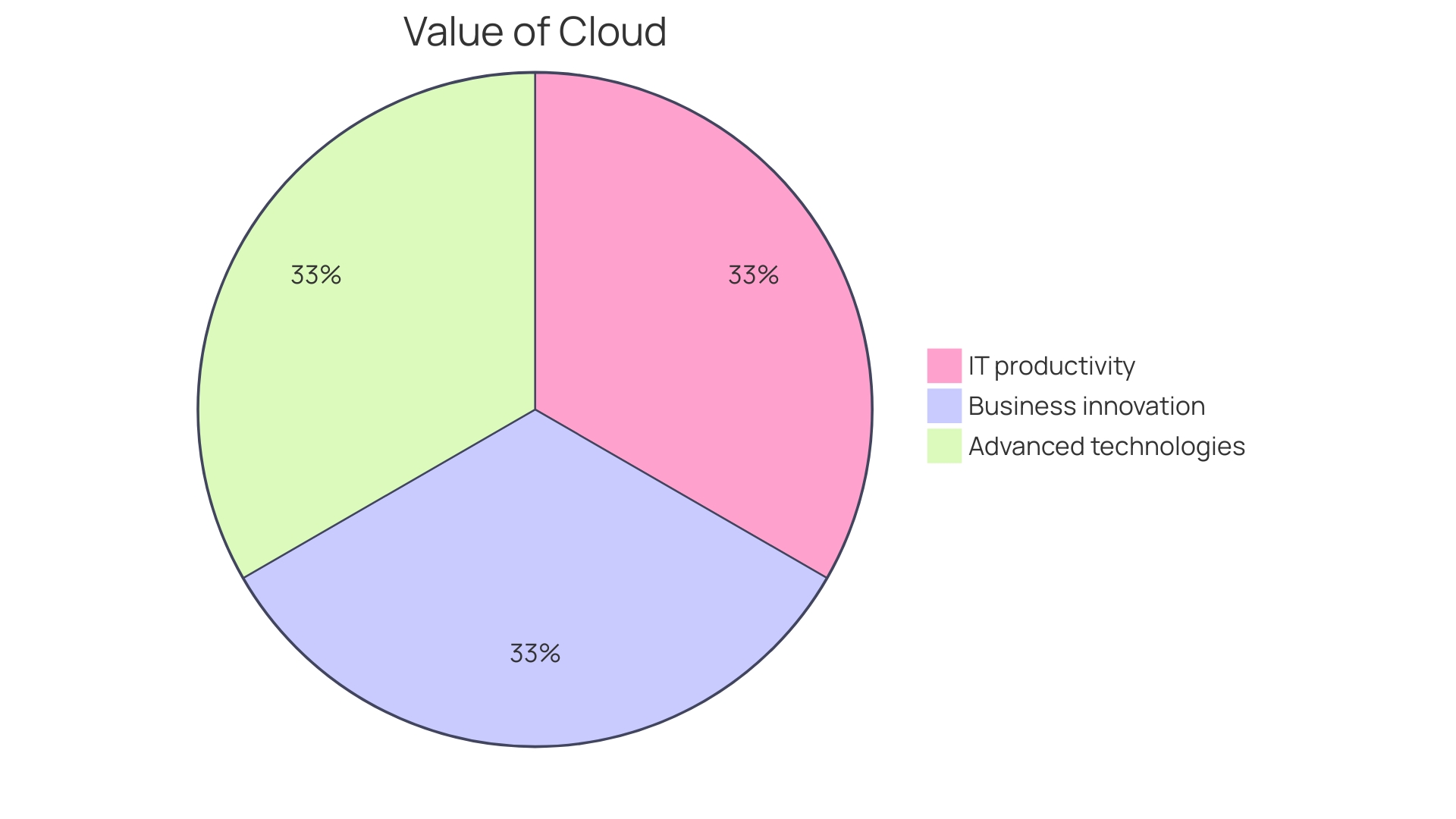
Platform as a Service (PaaS) and Software as a Service (SaaS) Offerings
AWS and Azure extend beyond Infrastructure as a Service (IaaS) into the domains of Platform as a Service (PaaS) and Software as a Service (SaaS). PaaS empowers organizations with the tools necessary for application development, testing, and deployment, allowing for a focus on innovation rather than the intricacies of infrastructure. Azure and AWS provide a plethora of development tools, operating systems, and programming languages, all while managing the underlying servers and networking equipment.
SaaS, on the other hand, delivers applications over the internet on a subscription basis. With SaaS, there's no need for installations or local maintenance, and applications are constantly updated and managed by the provider, ensuring access to the latest features. AWS and Azure offer SaaS solutions that span numerous categories, from productivity and office suites to project management tools, facilitating collaboration and improving time-to-value for businesses globally.
Indeed, cloud adoption is growing, with a Canalys report suggesting that Amazon Web Services (AWS) leads the market share at 62%, followed by Microsoft Azure at 48%, and Google Cloud at 33%. These services are chosen for their scalability, flexibility, and the ability to reduce upfront costs associated with physical servers and maintenance. The selection between IaaS, PaaS, and SaaS, whether opting for AWS or Azure, should align with a business's specific IT investments, regulatory requirements, and desired outcomes.

DevOps and Application Monitoring Tools
When it comes to DevOps and application monitoring, AWS and Azure are at the forefront, offering sophisticated tools that go beyond basic functionalities like source code repositories and build pipelines. These platforms provide advanced application performance monitoring capabilities that are essential for modern software development and operational excellence. Taking cues from real-world scenarios, such as the operations engineer overwhelmed by non-actionable alerts, we see the critical importance of intelligent monitoring solutions that cut through the noise. AWS's recent advancements, including automated pattern analytics and anomaly detection in Amazon CloudWatch Logs, underscore this evolution towards more proactive and context-aware monitoring systems. These enhancements are designed to pinpoint genuine issues, preventing alert fatigue and ensuring that critical warnings do not go unnoticed, thus safeguarding service reliability and user satisfaction. Azure, not to be outdone, offers its own suite of monitoring tools, with a strong emphasis on integrating with various services and providing a seamless observability experience across distributed architectures. Observability tools, as recognized by industry experts like Gartner, are no longer a luxury but a necessity, propelling AWS and Azure to continuously innovate to meet the high standards required for maintaining robust, secure, and reliable IT infrastructures.
Storage and Database Services
Navigating the landscape of cloud storage and database services, we see a diverse array of options tailored for various needs. AWS and Azure, two of the titans in the cloud services arena, offer robust solutions that address the dynamic prerequisites of today's data-driven enterprises. AWS presents a suite of services including Amazon S3, a scalable object storage system, and Amazon RDS, a managed relational database service designed for ease of use and maintenance. Azure counters with its own set of competencies, such as Azure Blob Storage for large-scale object storage and Azure SQL Database for managed relational database services.
The necessity for such services arises from the growing volume of data and the imperative for businesses to scale their operations efficiently. AWS's approach to modern data architecture enables the construction of scalable data lakes, leveraging a comprehensive collection of data services for analytics and machine learning directly on aggregated data. This strategy emphasizes low-cost scaling without sacrificing performance, which is crucial for organizations aiming to process and share data rapidly across various departments.
Azure's recent focus has been on enhancing its platform with AI-driven storage and data services. The growth in Azure's data estate is a testament to the new workloads and access patterns emerging with the advent of AI and machine learning. Azure's storage services have evolved to support these transformative technologies, ensuring customers can manage their data effectively at any scale.
Both AWS and Azure have recognized the importance of serverless technologies in modern data management, as evidenced by AWS's announcement of serverless database and analytics offerings. These solutions are designed to support customers' demanding workloads, enabling them to scale transactions, add capacity, and adapt workload patterns to optimize both performance and cost.
As businesses continue to grapple with the complexities of data proliferation, the choice between AWS and Azure hinges on their distinct offerings and the specific requirements of the organizations' workloads. Whether it's AWS's data lakes and analytics or Azure's AI-enhanced storage services, both platforms are committed to providing scalable, cost-effective solutions that facilitate rapid and insightful decision-making.
Security and Compliance
When it comes to cloud services, security and compliance are not merely checkboxes but are the bedrock of trust and reliability for any organization. The landscape of cloud security has evolved tremendously from its inception, where it was often a secondary concern, to today's environment where it is front and center in the minds of decision-makers. This paradigm shift was necessitated by the escalating sophistication of cyber threats as cloud adoption grew exponentially.
AWS and Azure are at the forefront of this security transformation, offering not just basic defense mechanisms but advanced, multi-layered security strategies. AWS's commitment to security is exemplified by their rigorous infrastructure audits and proactive vulnerability assessments aimed at safeguarding user data from unauthorized access, loss, and theft. The integrity of AWS's security is further underscored by their handling of Amis with 'RootDeviceType' set to 'instance-store,' ensuring that AWS-owned Amis are not compromised and require no customer intervention for continued protection.
Azure's approach to compliance, particularly its alignment with the GDPR, highlights their dedication to data sovereignty, minimization, and the right of access for individuals within the European Economic Area (EEA). Their commitment is not just to compliance in theory but also in the mastery of cloud data management to meet regulatory demands effectively.
This unwavering dedication to security by both AWS and Azure is a critical factor for organizations as they map out their cloud strategies. In fact, the 2024 Cloud Security Report illuminates the current trend of 78% of organizations adopting hybrid and multi-cloud strategies, with 43% using a combination of cloud and on-premises infrastructure, and 35% implementing a multi-cloud approach. This slight uptick from previous years signifies a maturation in the market, as the advantages of cloud computing become universally acknowledged.
Yet, challenges persist. Organizations grapple with the management of static, long-lived credentials and the meticulous configuration of user roles and privileges. The widespread issue of long-lived credentials, recognized for their insecurity and potential to cause breaches, continues to be a thorn in the side of cloud environments. Multi-factor authentication (MFA) and other best-practice safeguards are essential, yet not universally enforced, leaving gaps in security postures.
In light of these challenges, and the ever-present need for compliance and security, AWS and Azure continue to innovate and respond to the demands of the market. Their efforts reflect a deep understanding of the needs of organizations vying for competitive edge and digital sovereignty in a global market, as evidenced by AWS's recent announcement of an independent European cloud, catering to organizations with stringent regulatory requirements. Such strategic moves underscore the importance of local computing power and investments in digital infrastructure, as highlighted by leaders like Stefan Schnorr and Jarkko Levasma, heralding a new era of empowered and secure cloud computing.
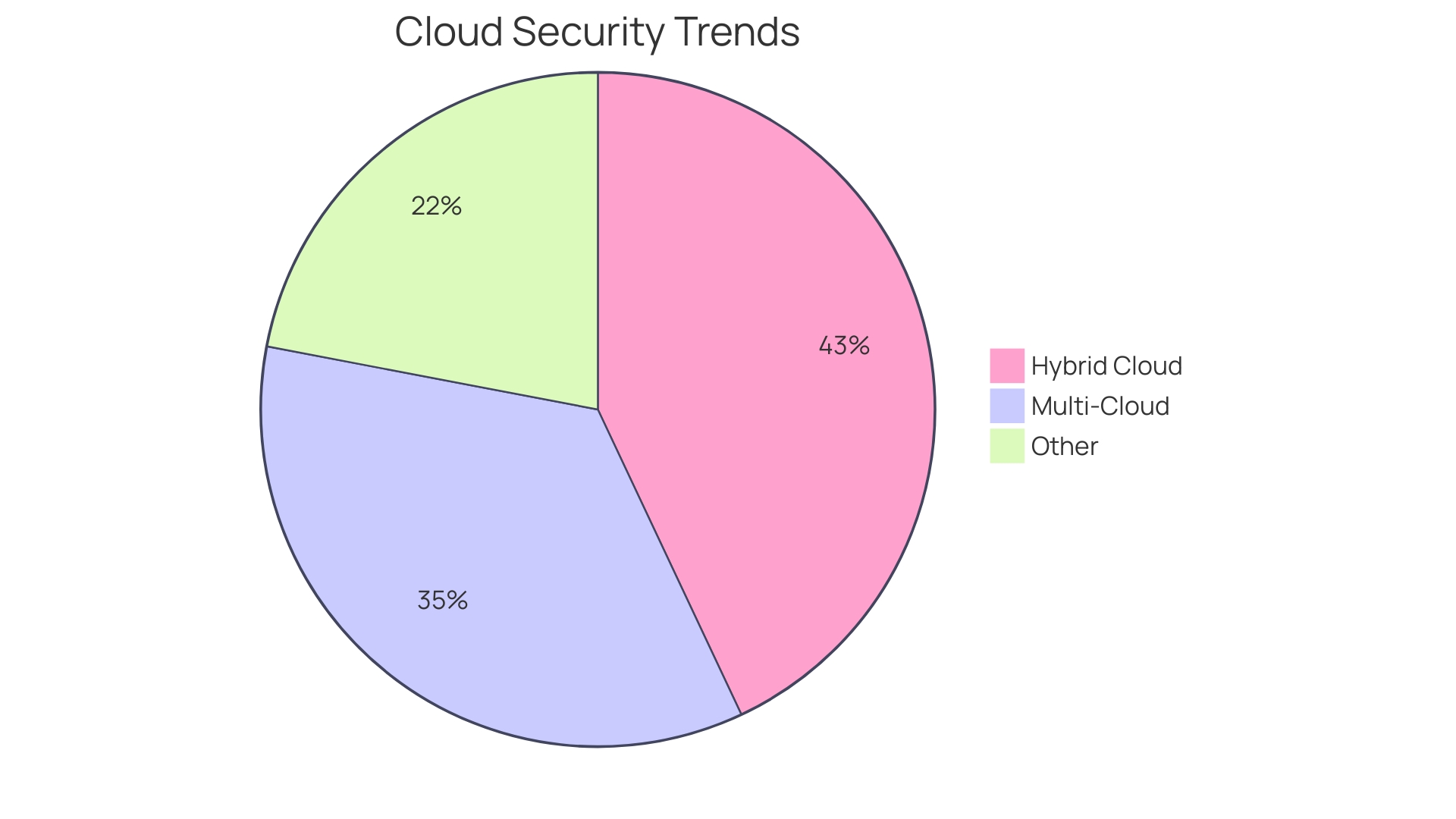
Global Infrastructure and Availability Zones
Amazon Web Services (AWS) is renowned for its extensive global infrastructure, which significantly surpasses that of Azure in terms of availability zones and data centers strategically situated across diverse regions. This expansive network is particularly beneficial for multinational organizations and those with precise regional demands. AWS's commitment to delivering over 200 fully featured services from data centers globally ensures that companies can enjoy lower latency and high availability applications by leveraging multiple availability zones. Each zone is meticulously designed with independent power, cooling, and stringent physical security, interconnected by redundant, ultra-low-latency networks.
AWS's infrastructure is not merely about the quantity of data centers but also their strategic locations. For instance, Frankfurt is acknowledged for low-latency connectivity to both Eastern and Western Europe, while Singapore is favored for its strategic position in Southeast Asia. Sydney shines as a tech hub with a robust startup ecosystem, and São Paulo stands as a key player in Latin America's digital transformation.
By investing in local jobs and skills, AWS propels economic growth in these regions. Their regions act like states in a vast continent, offering unique services tailored for each area's needs. The result is a powerful, distributed network that supports a wide array of industries, from finance and healthcare to media and entertainment, catering to the demands of a growing digital economy.
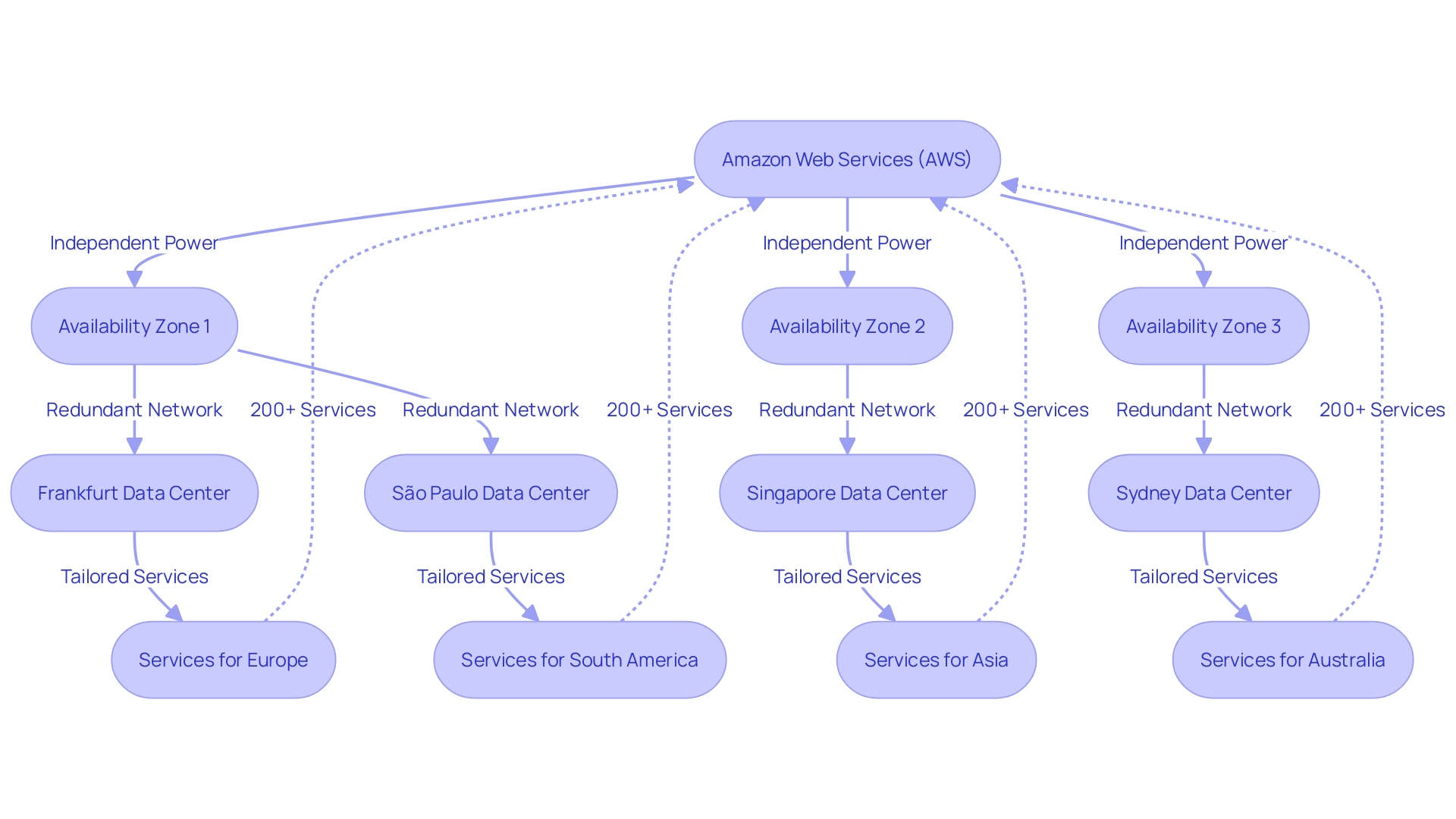
Pricing Models and Cost Considerations
When assessing cloud service providers, cost is a paramount consideration. AWS and Azure, two leading platforms, offer a variety of pricing models tailored to different business needs. AWS's Simple Storage Service (S3), for instance, demonstrates a cost structure where the unit price of storage may decrease over time, yet the total expenditure could rise due to increasing data storage demands. It's essential to understand each service's billing nuances, such as S3's detailed pricing model, to prevent unforeseen expenses.
Azure and AWS facilitate a pay-as-you-go approach, allowing businesses to scale with ease and only pay for the services they consume. Reserved instances present a cost-saving opportunity for those with predictable workloads, offering lower rates in exchange for a commitment to a certain level of usage over time. Spot instances, another cost-effective option, enable companies to bid for unused capacity at potentially lower prices.
Understanding and anticipating the frequency of tool usage by end-users is crucial in evaluating the true cost of cloud services. The choice between building in-house solutions or purchasing services hinges on several factors, including the organization's capacity for development and the associated time and effort. Cloud providers manage the scalability and maintenance, allowing businesses to focus on strategic goals.
In today's rapidly evolving technology landscape, marked by factors like AI adoption and digital modernization, IT leaders are prompted to re-evaluate cloud costs continually. As OODA's team of experts suggests, the strategic planning and analysis of cloud expenditures are vital for operational success and risk management. Therefore, a thorough understanding of pricing structures and strategic cost analysis in cloud services is indispensable for making informed decisions.
Integration with Other Services
Integration with a host of ancillary services and tools is a cornerstone for both AWS and Azure, encompassing everything from IAM systems to CDNs and serverless computing frameworks. These integrations are pivotal for enhancing the robustness and functionality of cloud environments. For instance, Amazon Q Business, a fully managed generative AI assistant, exemplifies AWS's prowess in providing seamless integration. It assists in querying enterprise systems like ServiceNow, enabling organizations to get relevant answers, generate content, and act upon enterprise data efficiently, without the need to invest heavily in building and maintaining a complex infrastructure.
Moreover, Azure Active Directory (AD) is a testament to Microsoft's commitment to secure and manageable cloud access, with features such as multi-factor authentication and comprehensive identity governance. This aligns with the evolving landscape of cloud security, which has transitioned from basic defenses to sophisticated, multi-layered strategies in response to the increasing sophistication of cyber threats.
The importance of these integrations is also highlighted by case studies, such as Chime Financial's commitment to providing secure financial products, and by the recent advancements in generative AI discussed at AWS re: Invent. These developments underscore the need for cloud services that are not only secure but also capable of leveraging AI and machine learning to sift through vast amounts of data for actionable insights.
The convergence of AI, ML, and cloud computing, as noted by industry leaders, is fueling innovations that are reliable and secure, meeting customers' needs throughout their journey. The integration capabilities of AWS and Azure play a critical role in ensuring operational efficiencies and secure access to cloud resources, addressing the concerns of enterprise leaders regarding data security in an increasingly hybrid work environment.
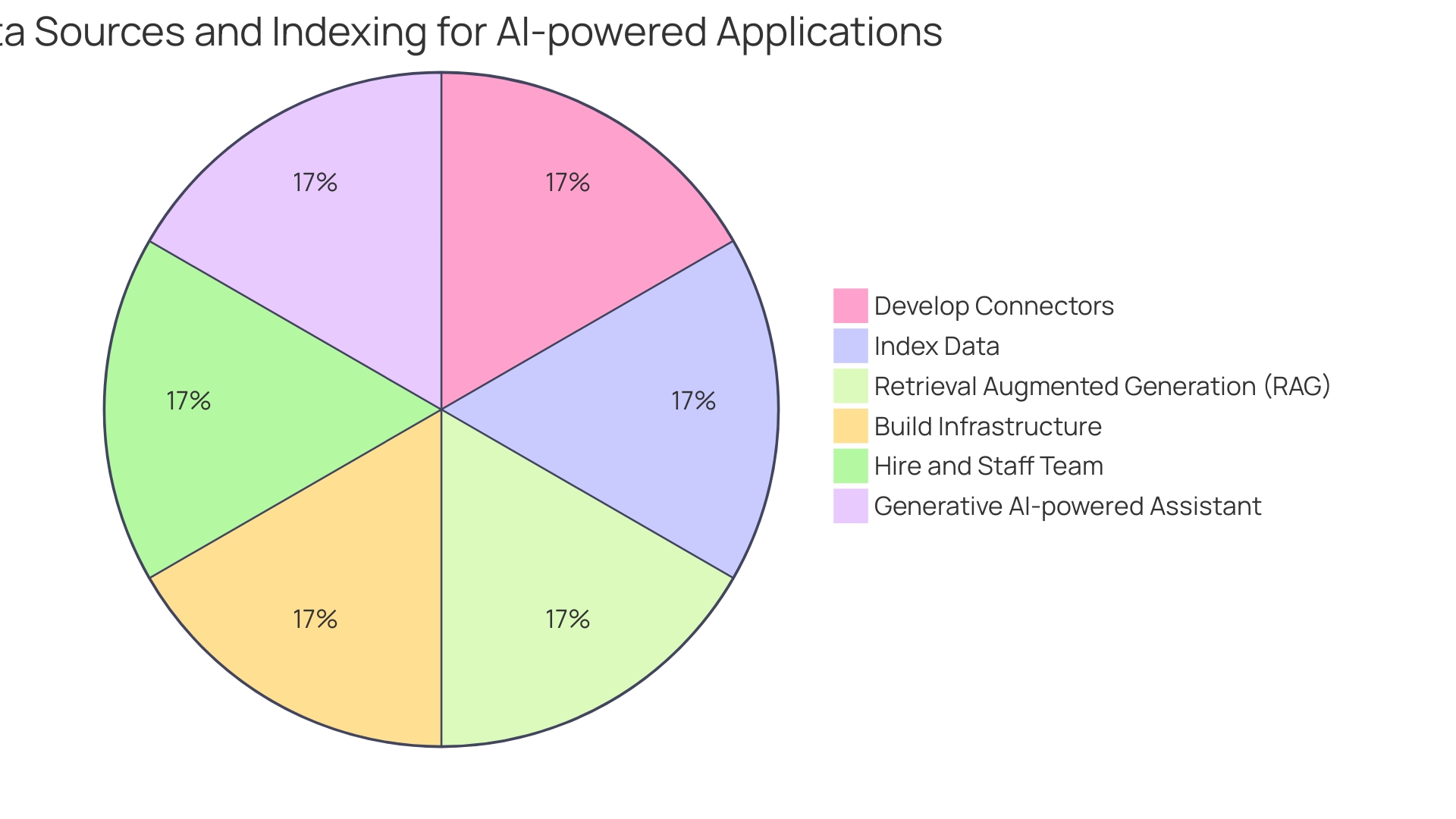
Open-Source Support and Community
AWS and Azure both recognize the importance of open-source software and have made significant strides in supporting and contributing to open-source projects. For instance, the Ford Foundation, driven by the goal to end global inequality, realized the need to evolve their digital presence in order to effectively communicate with their audience. To facilitate this, they took advantage of open-source tools to create a new video accessibility plugin for the WordPress community, significantly improving their content management system and workflow.
Similarly, Bosch's commitment to sustainability led to the development of their solid oxide fuel cell (SOFC) system. This innovation is not only an advancement in green energy technology but is also paired with a digital twin supported by open-source software, allowing for enhanced visualization and monitoring over the system's lifespan.
Open-source projects extend beyond the goodwill of individual organizations; they are a beacon for collaboration and innovation. As highlighted in the OpenSearchCon Europe event and Amazon's open source mentorship program, the open-source ecosystem thrives on community involvement. The ec2RuntimeMonitor project is a prime example where the community can review the code, submit feedback, and contribute towards cost optimization and sustainability efforts.
The adoption of open-source software is widespread, with the 2024 OSSRA report revealing that 96% of commercial software contains open-source components. This underscores the critical role of automated security testing to manage the software supply chain effectively. With an average of 526 open-source components in each application, manual testing is no longer feasible, making software composition analysis (SCA) tools essential.
Through their ongoing support and innovations in open-source security and cryptography, AWS has shown a strong commitment to the open-source community. They offer resources such as AWS Open Source Security and Open Source Cryptography, which provide guidance and showcase AWS's contributions to open-source innovations. The integration of open-source software has become a cornerstone of technological advancement, demonstrating that AWS and Azure are not merely cloud service providers but also active participants in fostering an environment where open-source software can flourish and drive industry-wide innovation.
User Experience and Interface
The interfaces of AWS and Azure, the leading cloud platforms, each reflect their distinct design philosophies and cater to different user preferences. AWS provides a broad set of features and services that allow customers to deploy a wide range of applications. For instance, Dunelm Group plc leveraged AWS to scale their digital platform, reflecting their growth in both organizational structure and software architecture to support their high-revenue generating website. Azure, on the other hand, offers deep integration with Microsoft's software, making it a compelling choice for enterprises embedded in the Microsoft ecosystem. Azure Active Directory exemplifies this, with its robust identity management and access control that seamlessly integrates with other Microsoft services.
Both platforms offer web-based consoles and command-line interfaces to manage resources, but they differ in their approach to usability and functionality. AWS's management console is known for its extensive capabilities, while Azure's portal is praised for its user-friendly experience. This aligns with the insights from Amber Case on the importance of transparent design, allowing users to focus on their objectives rather than the underlying technology.
In terms of user experience, the platforms also differ in how they present and manage resources. AWS tends to have a more granular control over services, which can be advantageous for managing complex infrastructures. Azure's interface is often considered more intuitive, especially for those familiar with Windows and other Microsoft products. The recent innovations at re: Invent, where AWS showcased interactive experiences, highlight the continual evolution of cloud services to enhance user engagement.
The choice between AWS and Azure's user experience and interface ultimately depends on the specific needs and preferences of the organization. Whether it is the performance-critical applications of companies like Talent.com, whose job matching algorithm benefits from AWS's capabilities, or businesses seeking seamless integration within the Microsoft suite, the decision must align with the strategic goals and technical requirements of the enterprise.
Support and Customer Service
As cloud services continue to evolve, the support and customer service options provided by AWS and Azure have become critical differentiators. AWS, renowned for its customer-centric approach, offers a range of premium support plans. These plans are designed to meet the needs of businesses of all sizes, from startups to global enterprises, ensuring they have the necessary resources to scale and adapt at their own pace. Customers benefit from faster response times and access to dedicated technical account managers who understand the intricacies of their operations and the importance of swift resolution to technical challenges. This is exemplified by the case of ICL, a multinational manufacturing and mining corporation, which leverages AWS's robust support network to monitor industrial equipment under harsh conditions. AWS's commitment to flexibility and affordability has made it a go-to platform for organizations that depend on reliable cloud services.
On the other hand, Azure's Active Directory (AD) provides a comprehensive suite of identity and access management features, including multi-factor authentication and identity governance capabilities. While Azure AD and AWS IAM are geared towards safeguarding cloud environments, their approaches and cost-effectiveness vary, which is a crucial consideration for businesses when choosing a cloud provider. Azure's commitment to security is evident in the development of its general-purpose computing advancements, such as the Graviton series, which reflects Microsoft's dedication to continuous innovation in cloud technology.
Moreover, the importance of immediate and efficient customer service cannot be overstated, as highlighted by recent studies indicating that a significant percentage of American customers seek immediate contact with support agents. Both AWS and Azure understand that AI and automation are enhancing customer support by handling basic inquiries, while human agents are essential for resolving more complex issues, ensuring a personalized and proactive experience.
In the fast-paced world of online retail, where companies like Dunelm Group plc generate substantial revenue through their digital platforms, the ability to swiftly address customer service inquiries is pivotal. AWS's user-friendly interface and intuitive navigation have been particularly beneficial for businesses looking to minimize the learning curve for their teams, thereby streamlining operations and maintaining customer satisfaction.
As cloud platforms continue to advance, AWS and Azure each present unique strengths in support and customer service. Organizations must consider these factors alongside their specific needs and growth strategies to make informed decisions regarding their technology investments.
Use Cases and Industry Applications
As cloud computing continues to dominate the tech landscape, AWS and Azure are at the forefront of providing robust infrastructure solutions for a diverse range of industry needs. AWS, with its vast array of services, is a powerhouse for startups and e-commerce platforms seeking to modernize their businesses. By leveraging AWS's scalable infrastructure, companies can bypass the traditional complexities of managing databases and hardware, instead easily adapting serverless architectures for core functions like order processing and inventory management.
Meanwhile, Azure is carving a niche in sectors that prioritize regulatory compliance and seamless integration with Microsoft products. The State of Alaska's move to primarily cloud-based computing with Azure exemplifies the platform's capabilities in facilitating digital transformation. By shifting to Azure, Alaska has unlocked new potential in service provision and is now poised to rapidly adopt advanced technologies to bolster its digital offerings.
This evolution in cloud services is underscored by recent advancements in storage and computing power. Amazon S3 Express One Zone, for instance, signifies a leap forward in data accessibility, supporting millions of requests per minute and offering performance up to ten times faster than previous iterations of S3 storage. Similarly, the progression from Amazon's Graviton to Graviton processors highlights the continual strides in general-purpose computing, promising greater efficiency and power.
As enterprises contemplate their cloud strategies, the importance of a cohesive digital environment cannot be overstated. The challenges of siloed data and the need for a 'digital twin'—a dynamic digital representation of physical systems—are critical considerations. Integrating CRM, ERP, and other data sources into a single, actionable model is paramount for identifying root causes and making informed decisions.
The public cloud market's structure, spanning IaaS, PaaS, SaaS, BPaaS, and DaaS, offers tailored solutions for every business need. With flexible payment models like pay-as-you-go and subscriptions, public cloud solutions from AWS and Azure provide a cost-effective means to access cutting-edge technology. As reported by Canalys, such service models are reshaping the future of technology, allowing for an IT environment that's efficient, scalable, and aligned with the evolving demands of businesses and public services alike.

Conclusion
AWS and Azure are leading cloud computing platforms that provide scalable, highly available, and secure systems for businesses. Both platforms have evolved their security measures to protect against cyber threats, offering sophisticated protocols. Real-world applications, such as GoDaddy's optimization of operations and the growing adoption of cloud services by small and medium enterprises, demonstrate the effectiveness and demand for cloud solutions.
AWS has long held a significant market share, but Azure is gaining momentum due to factors like digital transformation and the increasing significance of advanced technologies. When comparing the two platforms, it's essential to consider their service categories, infrastructure capabilities, pricing models, integration with other services, user experience, and support options.
AWS and Azure both offer a comprehensive suite of services encompassing compute, storage, networking, databases, and analytics. Both platforms have evolved their security measures to counteract the increasing sophistication of cyber threats. The decision between AWS and Azure should consider factors like existing IT ecosystems, specific business needs, and desired outcomes.
Both AWS and Azure provide comprehensive Infrastructure as a Service (IaaS) offerings, enabling enterprises to deploy and manage virtual machines, storage solutions, and networking functionalities. The choice between the two platforms depends on factors like pricing structures, instance options, and global reach through availability zones.
AWS and Azure extend beyond IaaS into the domains of Platform as a Service (PaaS) and Software as a Service (SaaS). PaaS empowers organizations with the tools necessary for application development, testing, and deployment, while SaaS delivers applications over the internet on a subscription basis. AWS and Azure offer a wide range of development tools and SaaS solutions that cater to different business needs.
AWS and Azure are at the forefront of DevOps and application monitoring, offering sophisticated tools that go beyond basic functionalities. These platforms provide advanced application performance monitoring capabilities that are essential for modern software development and operational excellence.
AWS and Azure offer robust solutions in cloud storage and database services, tailored for various needs. AWS's approach emphasizes scalable data lakes and analytics, while Azure focuses on AI-driven storage and data services.
Security and compliance are critical considerations for organizations when choosing a cloud service provider. AWS and Azure have evolved from basic security measures to advanced, multi-layered security strategies. The choice between AWS and Azure should consider the specific security requirements and regulatory demands of the organization.
AWS and Azure have extensive global infrastructures, but AWS surpasses Azure in terms of availability zones and data centers. The choice between AWS and Azure depends on the organization's regional demands and specific requirements.
Cost is a paramount consideration when assessing cloud service providers. AWS and Azure offer a variety of pricing models tailored to different business needs. The choice between AWS and Azure should align with the organization's specific requirements and strategic goals.
Integration with other services is a crucial aspect of both AWS and Azure. These platforms offer seamless integration with a host of ancillary services and tools, enhancing the robustness and functionality of cloud environments.
Support and customer service options provided by AWS and Azure are critical differentiators. AWS offers a range of premium support plans, ensuring businesses have the necessary resources to scale and adapt at their own pace. Azure's Active Directory provides comprehensive identity and access management features.
AWS and Azure provide robust infrastructure solutions for a diverse range of industry needs. AWS is a powerhouse for startups and e-commerce platforms, while Azure excels in sectors that prioritize regulatory compliance and seamless integration with Microsoft products.
In conclusion, AWS and Azure offer robust cloud computing solutions, each with its own strengths and capabilities. When choosing between the two platforms, organizations must consider factors like service categories, infrastructure capabilities, pricing models, integration with other services, user experience, support options, and industry applications. AWS and Azure embody the transformative power of cloud computing, enabling businesses to stay agile and responsive in a rapidly evolving digital world.




